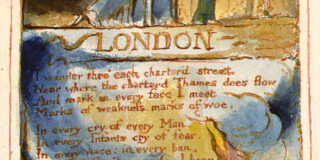
Preamble
Today, I received a few boxes of books from a deceased estate sale and at the bottom of one of the boxes was a copy of Charles Carroll’s book, The Negro a Beast, or In the Image of God. Upon skimming through it, I was struck by the absurdity of its title and content. It is a troubling artefact that reflects humanity’s capacity for inhumanity. My previous readings of Mein Kampf – both in English and German – were driven by a desire to understand the depths of human cruelty, particularly given my family’s history with the Holocaust. As someone who firmly believes in G-d and the oneness of humanity, I find it incomprehensible how anyone could rationally accept the ideologies presented by figures like Hitler or Carroll. This post aims to explore the themes of racism, ignorance and humanity’s struggle to embrace diversity, while also reflecting on the current situation in Gaza. I do not seek to justify Israel’s actions, but I maintain that both Israel and the Palestinians have rights to exist peacefully and securely.
Introduction
Charles Carroll’s 1900 book, The Negro a Beast, or In the Image of God, employs a selective and literalist interpretation of the Bible to argue that Black people are subhuman “beasts,” excluded from the divine creation of humanity in God’s image. This dehumanising ideology, rooted in pseudo-theological and pseudo-scientific racism, aimed to justify the oppression of Black people in the post-Reconstruction United States. Comparing Carroll’s views with Israeli perspectives on Palestinians requires a nuanced approach, as the latter are diverse and shaped by historical, political and cultural contexts. However, certain parallels and distinctions emerge when examining how both Carroll and some Israeli perspectives have used authoritative frameworks – whether scripture or ideology – to dehumanise or marginalise targeted groups. This analysis integrates previous discussions of Carroll’s biblical interpretations, the Slave Bible and Mein Kampf, while drawing on contemporary sources to explore Israeli views of Palestinians, focusing on religious and ideological narratives, their implications and counter-perspectives.
Carroll’s Biblical Interpretations and Views of Black People
Carroll’s core argument is that Black people are pre-Adamite “beasts,” created before Adam and Eve (Genesis 1:24-25) and thus not humans made in God’s image (Genesis 1:26-27). His key biblical claims include:
• Pre-Adamite Theory: Carroll posits that Black people are non-human creatures predating Adam, based on Genesis 4:14-17, denying them a soul or human status.
• Rejection of the Curse of Ham: Unlike pro-slavery theologians who used Genesis 9:20-27 to justify Black enslavement, Carroll denies that Black people are Ham’s descendants, arguing they exist outside the human lineage to maintain their “beastly” nature.
• Racial Hierarchy and Miscegenation: Citing Deuteronomy 7:3-4, Carroll frames racial mixing as a sin, claiming Black people are divinely ordained for servitude. He conveniently ignores inclusive passages like Galatians 3:28 (“no Jew nor Gentile”) and the Gospels’ emphasis on universal love.
Carroll’s exegesis is selective, conspiratorial and rooted in Old Testament literalism, reflecting the late 19th-century South’s fundamentalist Christianity, which sought biblical sanction for Jim Crow oppression. His work was countered by theologians like William G. Schell, who cited Genesis 1:27 and Acts 17:26 to affirm Black humanity and by African American theologians like Frederick Douglass, who used Psalm 68:31 to assert Black dignity.
Carroll’s view of Black people is unequivocally dehumanising, portraying them as soulless animals destined for subjugation. This ideology justified slavery, segregation and racial violence, appealing to white supremacists seeking divine and scientific validation for their prejudices.
Israeli Views of Palestinians: A Complex Spectrum
Israeli views of Palestinians are not monolithic and are shaped by a century-long conflict over land, security and self-determination, rooted in the establishment of Israel in 1948 and the subsequent displacement of Palestinians (the Nakba). Unlike Carroll’s singular, religiously driven narrative, Israeli perspectives range from progressive to hardline, influenced by political ideology, religious beliefs, security concerns and historical narratives. These views can be broadly categorised into secular, religious and nationalist frameworks, with some overlap. Below, I explore these perspectives, focusing on those that parallel Carroll’s dehumanising rhetoric and those that contrast with it, drawing on sources like Pew Research, Gallup and Amnesty International.
Religious and Ideological Frameworks
1. Religious Nationalist Views:
• Biblical Justification: Some religious Zionist settlers and ultra-Orthodox (Haredi) or religious (Dati) Jews view Palestinians as obstacles to a divinely ordained Jewish homeland, drawing on biblical promises of the Land of Israel (e.g., Genesis 15:18-21). Leaders like Rabbi Meir Kahane (founder of the Kach movement, banned in Israel) and contemporary far-right figures like Itamar Ben-Gvir have framed Palestinians as threats to Jewish sovereignty, sometimes using dehumanising language. For example, Kahane’s writings likened Palestinians to “Canaanites,” implying they have no legitimate claim to the land, a narrative echoing Carroll’s exclusion of Black people from humanity.
• Dehumanising Rhetoric: Hardline settlers and politicians have occasionally used terms like “terrorists” or “animals” to describe Palestinians, particularly during escalations like the 2023 Hamas attack. Social media posts from platforms like X (formerly Twitter) show some Israelis calling Palestinians “savages” or “vermin” in the context of violence, mirroring Carroll’s “beast” label. However, such rhetoric is not mainstream and is often condemned within Israel.
• Policy Implications: These views justify settlement expansion, displacement and restrictions on Palestinian rights, seen as fulfilling a divine mandate. Amnesty International reports that Israel’s policies in the Occupied Palestinian Territories, including forced displacement and apartheid-like conditions, reflect a system of domination, which some religious nationalists defend as biblically sanctioned.
2. Secular Nationalist Views:
• Security-Based Narratives: Many Israelis, particularly on the political right, view Palestinians primarily through a security lens, shaped by events like the Second Intifada (2000-2005) and the October 7, 2023, Hamas attack, which killed 1,200 Israelis. This perspective often casts Palestinians as a collective threat, with terms like “terrorists” applied broadly, especially to Gaza’s population under Hamas rule. A 2024 Pew survey found 40% of Israelis believe Israel should govern Gaza post-war, reflecting a desire for control over Palestinians.
• Historical Narrative: Some Israelis emphasise the 1948 war, where Arab states attacked Israel, to argue that Palestinian displacement was a consequence of Arab aggression, not Israeli intent. This narrative downplays Palestinian suffering (the Nakba, affecting 700,000 people) and frames Palestinians as adversaries, though not necessarily subhuman.
• Dehumanisation: While less religiously driven, secular nationalist rhetoric can dehumanise Palestinians by reducing them to security risks. For example, Israel’s 2023-2025 Gaza blockade, causing famine-like conditions, has been justified as necessary to combat Hamas, despite civilian suffering.
3. Progressive and Liberal Views:
• Human Rights Perspective: Many Israeli Jews, particularly secular (Hiloni) and left-leaning groups, recognize Palestinian humanity and advocate for coexistence. A 2023 Pew survey found 35% of Israelis believe a two-state solution is possible, though this is down from 44% in 2017. Organisations like B’Tselem and Breaking the Silence document Palestinian suffering under occupation, emphasising shared humanity.
• Biblical Inclusion: Progressive Jewish theologians, like Rabbi Arik Ascherman, draw on scriptures like Leviticus 19:18 (“Love your neighbour as yourself”) to advocate for Palestinian rights, directly opposing Carroll’s exclusionary exegesis. These voices reject dehumanising narratives and support Palestinian self-determination.
• Youth and Arab Israeli Views: Younger Israelis (18-34) and Arab Israelis are more skeptical of peaceful coexistence, but they also reject the status quo, indicating openness to change. Arab Israelis, making up 20% of Israel’s population, often empathise with Palestinians, viewing them as kin under occupation.
4. Public Opinion Data
• Sympathy and Favourability: A 2024 Gallup poll shows 58% of Israelis view Palestinians unfavourably, with only 18% holding a positive view, the lowest since 2015. However, this is not equivalent to Carroll’s total dehumanisation, as many Israelis distinguish between Palestinian civilians and groups like Hamas.
• Two-State Solution: Support for a two-state solution has declined, with only 31% of Israeli Jews believing Palestinians support it. A 2024 Israel Democracy Institute poll found 50% of Israelis oppose a Palestinian state, reflecting skepticism but not necessarily dehumanisation.
• Security Concerns: Post-October 7, 2023, 60% of Israelis expressed concern about Palestinian attacks from the West Bank, fueling hardline views. Yet, 26% still support peaceful coexistence, indicating a divided society.
Comparisons with Carroll’s Views
1. Dehumanising Rhetoric:
• Similarities: Carroll’s portrayal of Black people as “beasts” finds echoes in the most extreme Israeli rhetoric, where Palestinians are called “animals” or “terrorists” by far-right figures or during heightened conflict. Both use authoritative frameworks – Carroll’s Bible, some Israelis’ religious or nationalist ideologies – to justify marginalisation. For example, Carroll’s pre-Adamite theory parallels Kahane’s “Canaanite” label, both denying the target group’s legitimacy.
• Differences: Carroll’s view is absolute, denying Black people any humanity, while Israeli dehumanisation is often conditional, tied to security threats or specific groups (e.g., Hamas). Most Israelis, even hardliners, acknowledge Palestinian humanity, as evidenced by negotiations like the Oslo Accords. Carroll’s work was a fringe theological treatise, whereas extreme Israeli views are minority opinions within a broader spectrum.
2. Use of Religious Authority:
• Similarities: Both Carroll and some religious Zionists manipulate sacred texts to exclude or subordinate. Carroll’s selective use of Genesis and Deuteronomy mirrors how some settlers cite biblical land promises to justify displacing Palestinians. Both ignore inclusive scriptures (e.g., Galatians 3:28 for Carroll, Leviticus 19:33-34 for Zionists, which calls for loving the “stranger”).
• Differences: Carroll’s exegesis is purely theological, aimed at justifying slavery’s legacy, while Israeli religious narratives are tied to territorial and national identity, not just theology. Progressive Israeli Jews use scripture inclusively, unlike the lack of such voices in Carroll’s context, where white supremacy dominated.
3. Policy Outcomes:
• Similarities: Both ideologies support systemic oppression. Carroll’s views justified Jim Crow and racial violence, while hardline Israeli views underpin settlement expansion, blockades and apartheid-like policies, as documented by Amnesty International. Both frame the targeted group as inherently inferior or threatening to maintain dominance.
• Differences: Carroll’s work had no direct policy role, serving as ideological propaganda, whereas Israeli views shape state policies, from military operations to settlement laws. Israel’s actions occur in a conflict with mutual violence (e.g., Hamas attacks), unlike the one-sided oppression of Black people in Carroll’s era.
4. Counter-Narratives:
• Similarities: Both faced resistance from inclusive voices. Schell’s rebuttal and African American theology countered Carroll, while Israeli progressives and Arab Israelis challenge hardline views, advocating for Palestinian rights. Both counter-narratives emphasise universal humanity, citing inclusive scriptures or principles.
• Differences: Israeli counter-narratives operate within a democratic society with active debate, as seen in protests and organisations like Peace Now. Carroll’s opponents were marginalised in a deeply racist society, with less institutional power to effect change.
Parallels with the Slave Bible and Mein Kampf
• Slave Bible: Like Carroll, the Slave Bible manipulated scripture (omitting liberationist passages like Exodus) to control Black people, paralleling how some Israeli policies restrict Palestinian rights to maintain control. However, the Slave Bible acknowledged Black humanity, unlike Carroll and Israeli policies are driven by security and politics, not just religion.
• Mein Kampf: Hitler’s dehumanisation of Jews as “parasites” mirrors Carroll’s “beasts” and extreme Israeli rhetoric against Palestinians. Both Carroll and Hitler used pseudo-theological or cultural narratives to exclude, but Israeli views are more varied, with many rejecting such extremes. The Holocaust’s genocidal outcome far exceeds Carroll’s or Israel’s actions, though Israel’s Gaza operations have been criticised as disproportionate.
Contextual Considerations
Carroll’s views emerged in a post-slavery, racially segregated America, where Black people were powerless and dehumanisation was systemic. The Israeli-Palestinian conflict involves two groups claiming the same land, with mutual violence and competing narratives. Palestinians, unlike Black people in Carroll’s era, have agency through groups like the PLO and Hamas, complicating the dynamic. Israel’s democratic structure allows for dissent and progressive voices, absent in Carroll’s context and international scrutiny (e.g., ICJ rulings) constrains Israel’s actions, unlike the unchecked racism of 1900 America.
Conclusion
Charles Carroll’s biblical interpretations in The Negro a Beast dehumanise Black people as soulless beasts, using scripture to justify racial oppression. Some Israeli views of Palestinians, particularly among religious nationalists, parallel this by framing Palestinians as threats or illegitimate claimants to the land, occasionally using dehumanising language or biblical mandates. However, these views are not universal; many Israelis, especially progressives, recognize Palestinian humanity and advocate for coexistence, a stark contrast to the near-universal racism of Carroll’s audience. While both manipulate authoritative frameworks, Carroll’s ideology is more absolute and Israeli perspectives are shaped by a complex, ongoing conflict with security and political dimensions. The Slave Bible and Mein Kampf highlight similar patterns of manipulation, but Israel’s democratic debate and international context distinguish it from Carroll’s era. Understanding these comparisons underscores the dangers of exclusionary narratives while highlighting the potential for inclusive counter-voices to foster justice and reconciliation.


